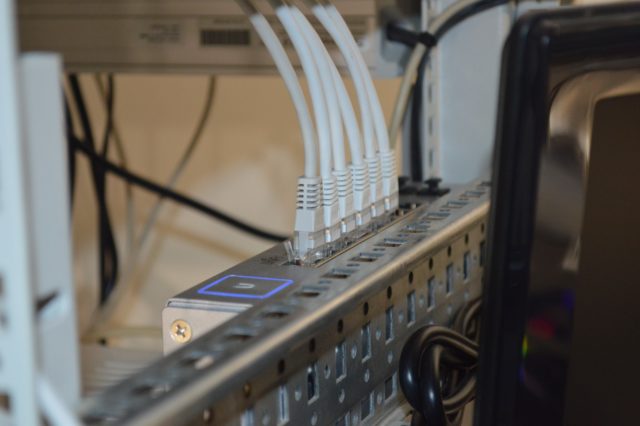One of the biggest problems facing enterprises looking to build and maintain a reliable, high-performance WAN is the “last mile” problem. The last mile of data transmission can be the hardest to standardize and lead to erratic performance even if you do everything else right.
The last mile problem is one of the main reasons MPLS (Multiprotocol Label Switching) has continued to persist in the market despite its glaring weaknesses when it comes to cloud and mobile computing. Many believe that SD-WAN simply cannot address the challenges of the last mile reliably. However, with the arrival of cloud-based SDWaaS and technologies like ILMM (Intelligent Last Mile Management) this point of view has become dated and SD-WAN users are now capable of seeing last-mile performance that meets or exceeds that of MPLS at a lower cost.
In this piece, we will explore the last mile problem in more detail, explain what ILMM is, and how cloud-based SDWaaS can help you modernize your WAN.
The last mile problem explained
The last mile refers to the connection that goes from an end-user to the first provider connection point. Using a small office or home with a cable Internet connection, the last mile would cover the distance between the on-premises cable modem and the first piece of routing equipment from the ISP (Internet Service Provider). It is useful to note that you may also see this referred to as the first mile in networking, which makes sense when you consider that data transmissions both begin and end at this point in a connection (e.g. you are both the originator of a Google search, and the final destination of the web page that is returned). When building out a WAN that spans multiple regions, ensuring reliability over the last mile can be extremely difficult and time consuming. The quality of ISP infrastructure varies from region to region and building in redundancy may be difficult or even impossible. This is a real problem, because if the last mile is compromised, the entire connection goes down.
In short, the last mile is often the “weakest link” in the WAN chain.
MPLS: reliable in the last mile, but costly and comes with performance tradeoffs
MPLS solved this problem by providing dedicated leased lines that placed the burden of maintaining the last line on the MPLS provider. Enterprises were able to count on 99.999% uptime SLAs, assuming of course they also invested in expensive redundant MPLS links in each area they required service. While this was costly and led to the inherent cloud and mobile computing challenges associated with trying to use MPLS along with modern apps and services, it was often worthwhile when compared to legacy SD-WAN.
Legacy SD-WAN : economical, but difficult to monitor and manage
With legacy SD-WAN, enterprises were left to solve the last-mile problem themselves. This meant working with different global ISPs, navigating the process, culture, and language barriers that come with doing so, and configuring monitoring of last mile connections on their own. What made things worse is that often monitoring solutions were rather unsophisticated, depending on ICMP (pings) of last mile routers and nothing more. This meant that while complete blackouts could be detected and accounted for, brownouts and other performance issues went undetected until they were already wreaking havoc on performance.
SDWaaS with ILMM: A reliable, high-performance, and modern approach to last-mile management
So far, we have covered two: spend more on MPLS and deal with the inherent trombone routing and mobile & cloud computing challenges or use legacy SD-WAN, and deal with the difficulty of ensuring reliable last-mile performance on your own. Both of these are sub-optimal for obvious reasons. MPLS forces enterprises to overspend and take a “square peg, round hole” approach to mobile and cloud access. Legacy SD-WAN makes achieving enterprise-grade reliability at scale anywhere from difficult to impossible. Premium, cloud-based SDWaaS provides enterprises the upsides of both approaches, while also mitigating the downsides and improving performance. This is possible for two specific reasons: the robust nature of premium SDWaaS infrastructure and the benefits of ILMM.
Premium SDWaaS providers not only enable Policy-based Routing (PbR) but also provide users access to an SLA-backed backbone with multiple Points of Presence (POPs) at strategic locations across the globe. The backbone is supported by tier 1 ISPs and the POPs enable SDWaaS providers to offer high-performance connectivity across the globe while also enabling the flexibility and scalability required to meet the demands of mobile and cloud computing. Further, given that SD-WAN is inherently transport type agnostic (e.g. it can leverage xDSL, cable, 4G LTE, etc) true redundancy can be rapidly configured at a rate significantly lower than MPLS.
Additionally, ILMM is a real game-changer in last mile management. By enabling granular, intelligent, and dynamic monitoring of network performance both upstream and downstream of the ISP, ILMM allows for rapid root cause isolation down to a given service or last-mile endpoint. This means that ILMM can detect and help resolve blackouts AND brownouts rapidly. This helps improve both uptime and overall WAN performance (simple ICMP monitoring can only help with the former), while providing enterprises with all the inherent advantages SD-WAN has over MPLS. Some of the specific features that make ILMM so powerful include:
Continuous last mile profiling.
Uses data warehouse capabilities to generate a dynamic last mile performance model. This helps develop a baseline of metrics like packet loss, latency, and jitter to identify and mitigate performance brownouts.
Infrastructure service monitoring.
Helps identify outages in commonly used network services like HTTP, DNS, ICMP (ping), and more.
Pinpoint identification.
Eliminates finger-pointing and reduces mean time to resolution. The entire connection from location through ISP is monitored to enable accurate and fast identification of the cause of problems.
Further, the self-service capabilities of SDWaaS mean that when something goes awry, enterprises can bypass the red-tape and headaches associated with trouble tickets and change requests and jump straight to a solution.
SDWaaS with ILMM provides a modern solution to the last mile problem
As we have seen, SDWaaS with ILMM is uniquely capable of solving the last mile problem in a way that is conducive to maximizing WAN performance for the modern enterprise. By providing reliability that matches or exceeds MPLS with the flexibility of SD-WAN and combining that with ILMM, SDWaaS creates a real paradigm shift in the world of global enterprise WAN.








